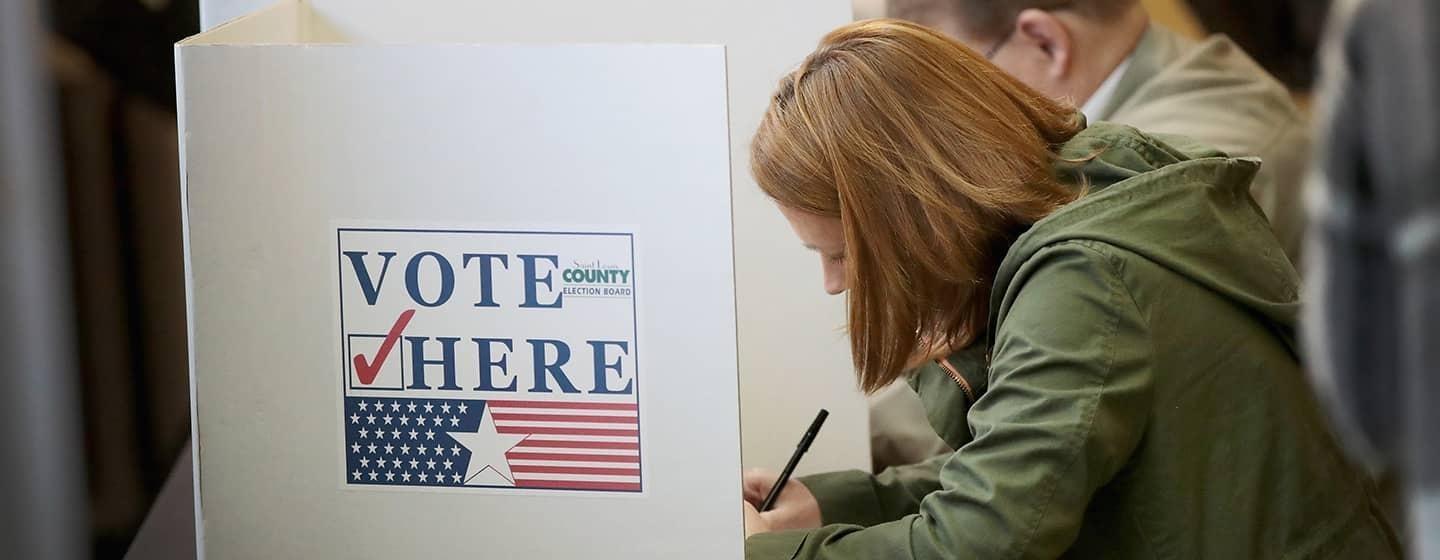The Science of Opinion Polls


It’s been election season for many months, but as the calendar rolls closer to election day it’s impossible not to miss the headlines:
“Candidate A surges ahead! Candidate B drops in latest poll!”
“Candidate A and B are tied in this state!”
“Majority supports issue C”
Yep, poll results are a staple of news coverage whether online, in print, or on the air. But it isn’t easy to get those numbers, says Jason Husser, Assistant Professor of Political Science and Policy Studies and Director of the Elon University Poll, which surveys North Carolina residents about a variety of issues and candidates. The poll’s findings are used by numerous media outlets.
“Because of how technology has changed the way we communicate, we’ve shifted out polling from an all in-person telephone poll to a mix of internet and phone polling,” said Husser. “We’ll still make contact with about 10,000 people to get the 1,000 responses needed for an accurate survey.”
Polling science shows that 1,000 responses creates a manageable uncertainty factor. That’s the “plus or minus” margin of error you always read or hear when the results of a poll are released. A smaller number increases the margin of error while a larger number doesn’t reduce the margin of error very much.
Opinion polls, such as the Elon Poll, are based in science, mathematics, social science, statistics, and probability. But the result of this measurement of public opinion is not the discovery of an unchanging truth or a science-based fact. An opinion poll produces a science-based glimpse of what people are thinking at a certain moment. It is making sense out of random data.
Think of it as snapshot of the public’s opinion at one moment in time.
The goal is to measure the opinion of a large group of people by sampling the opinion of a much smaller group. To make it all work, the poll must ensure the sample group accurately represents the larger population.
The Elon Poll buys a list of cell phone and landline phone numbers along with email addresses from a private company. Random numbers are drawn and called and post cards with a survey link are sent until the goal of 1,000 contacts is reached.
The responses are then matched to the results of the U.S. Census and weighted for the population you want to represent.
“The census is our primary weighing point, so we make sure our sample matches North Carolina in terms of age, race and gender,” says Husser. “So you will never see an Elon Poll that has too many women, or men, or people of color. The percentage we release at the end will perfectly match the census data for the state.”
Elon students are trained to conduct the poll and even with the internet component polling is still labor intensive.
“It’s much easier and faster and cheaper to conduct all of the polling by the internet but it’s not as accurate as a combined phone and online poll,” adds Husser. “Not everyone uses the internet all of the time, just like not everyone has a cell phone. You need to utilize all of the methods of communication to create a really accurate poll.”
However even before the survey starts, there’s another check that is performed to increase the accuracy of the poll.
The survey questions are pre-tested to make sure the question itself doesn’t affect the polls' findings. Simply adding or subtracting a word can change the response, especially in the hyper-partisan environment the nation finds itself in.
“Questions can put people on the spot, so respondents will lie to an interviewer so they don’t look bad,” admits Husser. “That’s why we pre-test question and even ask multiple questions to try and get as accurate a response as possible.”
It takes about one week to compile the findings. The poll is then released to become part of the news cycle.